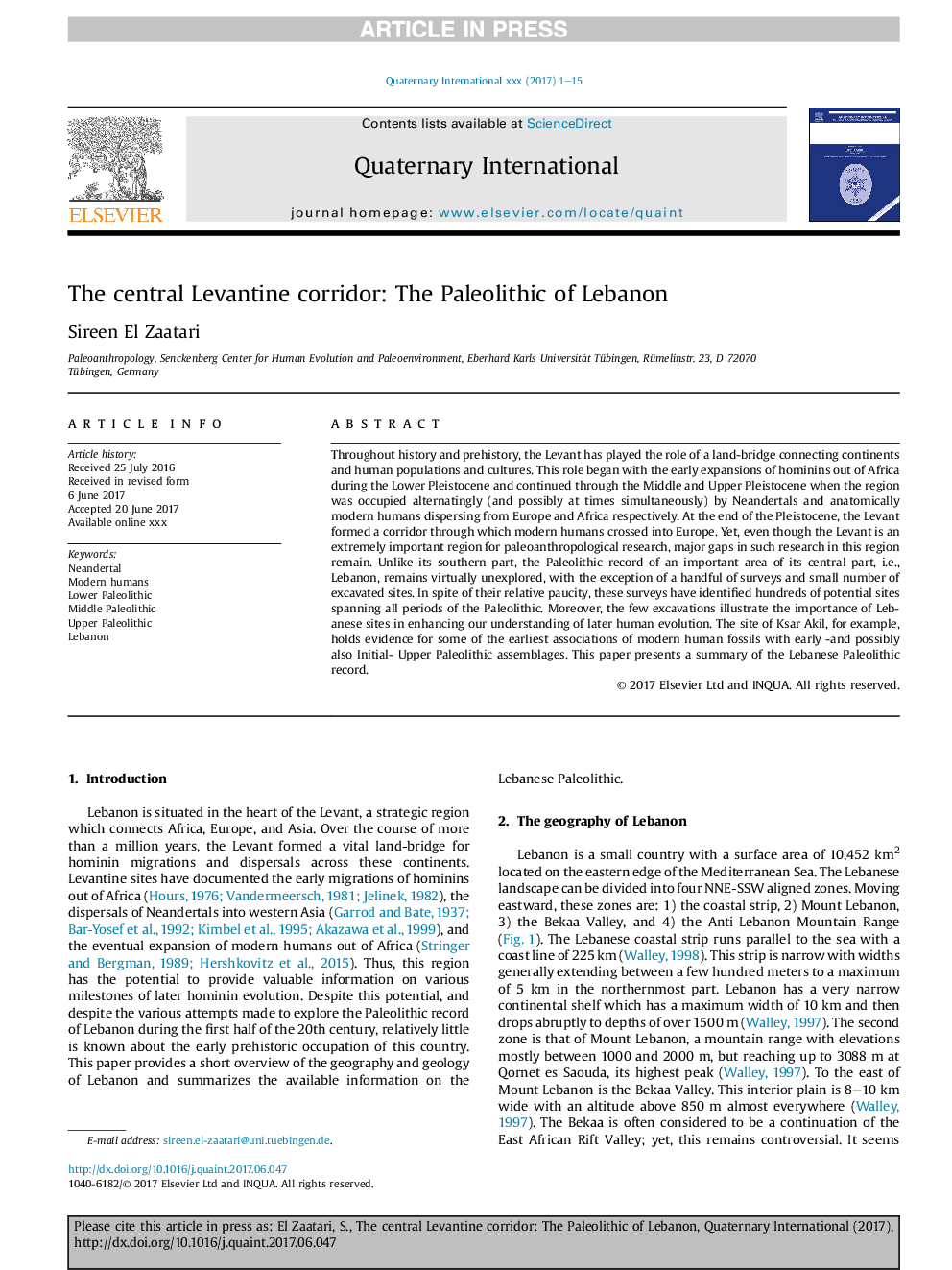| کد مقاله | کد نشریه | سال انتشار | مقاله انگلیسی | نسخه تمام متن |
|---|---|---|---|---|
| 7450712 | 1484054 | 2018 | 15 صفحه PDF | دانلود رایگان |
عنوان انگلیسی مقاله ISI
The central Levantine corridor: The Paleolithic of Lebanon
ترجمه فارسی عنوان
کرانه مرزی لووانتین: پالئولیت لبنان
دانلود مقاله + سفارش ترجمه
دانلود مقاله ISI انگلیسی
رایگان برای ایرانیان
کلمات کلیدی
موضوعات مرتبط
مهندسی و علوم پایه
علوم زمین و سیارات
زمین شناسی
چکیده انگلیسی
Throughout history and prehistory, the Levant has played the role of a land-bridge connecting continents and human populations and cultures. This role began with the early expansions of hominins out of Africa during the Lower Pleistocene and continued through the Middle and Upper Pleistocene when the region was occupied alternatingly (and possibly at times simultaneously) by Neandertals and anatomically modern humans dispersing from Europe and Africa respectively. At the end of the Pleistocene, the Levant formed a corridor through which modern humans crossed into Europe. Yet, even though the Levant is an extremely important region for paleoanthropological research, major gaps in such research in this region remain. Unlike its southern part, the Paleolithic record of an important area of its central part, i.e., Lebanon, remains virtually unexplored, with the exception of a handful of surveys and small number of excavated sites. In spite of their relative paucity, these surveys have identified hundreds of potential sites spanning all periods of the Paleolithic. Moreover, the few excavations illustrate the importance of Lebanese sites in enhancing our understanding of later human evolution. The site of Ksar Akil, for example, holds evidence for some of the earliest associations of modern human fossils with early -and possibly also Initial- Upper Paleolithic assemblages. This paper presents a summary of the Lebanese Paleolithic record.
ناشر
Database: Elsevier - ScienceDirect (ساینس دایرکت)
Journal: Quaternary International - Volume 466, Part A, 1 February 2018, Pages 33-47
Journal: Quaternary International - Volume 466, Part A, 1 February 2018, Pages 33-47
نویسندگان
Sireen El Zaatari,
